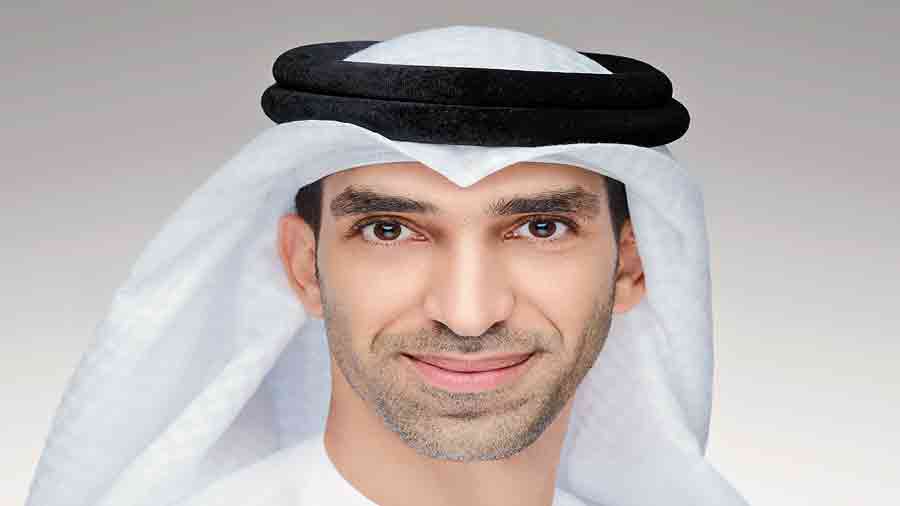The Narendra Modi-government signed its first free trade deal in February with the United Arab Emirates. In an interview with The Telegraph, Thani bin Ahmed al Zeyoudi, UAE minister of state for foreign trade, says the trade deal will also remove non tariff barriers, foster investment on both sides and offer a launchpad for re-export, without allowing third party countries to misuse the FTA.
• The UAE now has the distinction of being the first country with which India signed an FTA in over a decade. Why do you think UAE made the cut ahead of others?
First, it’s important to note that India is also the first country with whom the UAE has signed a bilateral deal; so the distinction works both ways. There are many reasons for this, not least the obvious deep-seated economic and cultural ties between the two nations, which go back many decades, well before the founding of the Emirates. The UAE is now home to 3.4 million Indians, the largest ethnic group in the country, and they are behind 4,365 companies, 238 commercial agencies and 4,862 trademarks registered here.
Our economies are also highly complementary. India is built around agriculture, manufacturing, textiles, appliances, and jewellery, while the UAE excels in energy, precious metals, aluminium and, perhaps above all, professional services. We can offer each other’s private sector platforms for expansion, create opportunities for investment and pursue joint ventures in priority sectors such as renewable energy and technology.
• Trade between the two countries aims to reach $100 billion by 2030. Which are the sectors/industries you think will contribute the most to that?
It’s a comprehensive deal, one that eliminates or reduces tariffs and removes many non-tariff barriers to trade. So, it’s hoped that all sectors will contribute to this. We have now in place a structure of tariff reductions or elimination that covers key sectors such as aluminium, copper, steel, and polymers such as polyethylene and polypropylene. Importantly, it also provides new avenues for our service sector -- from finance and telecoms to health and tourism – and contributes to our food security agenda through expanded investment in agriculture and logistics.
For Indian exporters, we can provide a gateway not just to the UAE but to the rapidly expanding markets of West Asia, East and North Africa and Europe. Indian exports to the UAE have remained constant for the last five years. So, accelerating trade flows, particularly re-exports which represent more than 45 per cent of imports to the UAE, can help make a significant contribution to this goal.
• What are the sectors/industries in India which can benefit from the deal and vice versa?
We hope every sector in India benefits. But as petroleum products, gems and jewellery, apparel, iron and steel, and telecom equipment comprise two-thirds of India’s exports to the UAE, it is to be expected these will benefit the most. We also anticipate India’s services sectors to benefit as well including construction, health care, hospitality, and logistics.
Of course, the two nations already share deep economic ties, and the UAE’s investment in India is estimated to be around $14 billion – India’s tenth-largest source of FDI. This is primarily focused on services, maritime industries, energy, infrastructure and real estate and development. In recent years, we have seen a number of important strategic investments into telecom, logistics infrastructure, renewable energy and food production, real estate, oil and gas, and food and beverage sectors. So, we expect the CEPA (comprehensive economic partnership agreement) to open doors to further co-operation.
• While we are aware of how India is set to benefit by the removal of 5 per cent duties on many items, how does UAE benefit from the FTA? Which are the categories that face high tariffs and how will they come down?
As we’ve outlined, tariffs will be removed or significantly reduced on many goods. Importantly, the CEPA also removes non-tariff barriers to trade and includes special arrangements for customs procedures which will improve efficiencies and increase trade flows between the two countries.
• How does UAE propose to enforce rules of origin/value addition to limit the potential misuse of the FTA?
The CEPA comes with robust governance procedures and legal remedies, which include the establishment of special remediation committees. It also includes clear and transparent rules of origin, and conditions related to value add as well as special arrangements for certain industrial goods to prevent the misuse to this agreement by third party countries.
• Would you say that the FTA could also attract Indian investment in the UAE? If so, which are the sectors that may attract this business?
We have certainly structured the CEPA to facilitate investment flows in both directions, and we are confident that Indian investors, industrialists and entrepreneurs will find that the UAE offers a dynamic, open and business-friendly ecosystem that provides an unrivalled platform for regional and international expansion.
We are pursuing a diversification strategy and believe that our advanced technology, communications, healthcare and pharmaceuticals sectors present major opportunities, while real estate and energy will continue to attract investment from India.
• UAE is the first country with whom India has included digital trade in an FTA agreement. However, it will be utilized on a best endeavour basis and not subject to dispute settlement mechanisms. Do you consider it enough to recognize the power of e-commerce or does more need to be done in the future?
The UAE and India recognize the economic growth and opportunity that digital trade provides, and the importance of accelerating its development by overcoming issues concerning digital trade rules. The CEPA’s Digital Trade chapter establishes a framework that will help to promote consumer confidence in digital trade and foster an environment conducive to the advancement of digital trade, including e-commerce and the digital transformation of the global economy.
Of course, more can be done in the future, especially as digital trade continues to evolve. As such, the UAE and India has agreed to revisit the Digital Trade chapter in the future to address the changes in the digital era.










